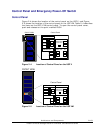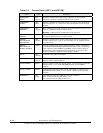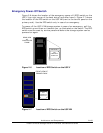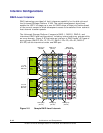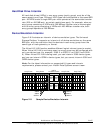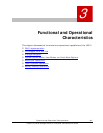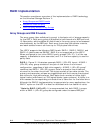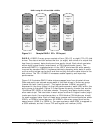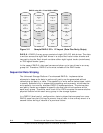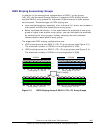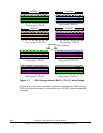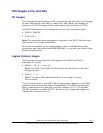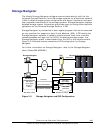
3-2 Functional and Operational Characteristics
Hitachi Universal Storage Platform V/VM User and Reference Guide
RAID Implementation
This section provides an overview of the implementation of RAID technology
on the Universal Storage Platform V:
• Array Groups and RAID Levels
• Sequential Data Striping
• LDEV Striping Across Array Groups
Array Groups and RAID Levels
The array group (also called parity group) is the basic unit of storage capacity
for the USP V. Each array group is attached to both boards of a BED pair over
16 fibre paths, which enables all disk drives in the array group to be accessed
simultaneously by the BED pair. Each array frame has two canister mounts,
and each canister mount can have up to 128 physical disk drives.
The USP V supports the following RAID levels: RAID-1, RAID-5, RAID-6, and
RAID1+0 (also known as RAIDA). RAID-0 is not supported on the USP V.
When configured in four-drive RAID-5 parity groups (3D+1P), ¾ of the raw
capacity is available to store user data, and ¼ of the raw capacity is used for
parity data.
RAID-1.
Figure 3-1 illustrates a sample RAID-1 (2D+2D) layout. A RAID-1
(2D+2D) array group consists of two pair of disk drives in a mirrored
configuration, regardless of disk drive capacity. A RAID-1 (4D+4D) group*
combines two RAID-1 (2D+2D) groups. Data is striped to two drives and
mirrored to the other two drives. The stripe consists of two data chunks. The
primary and secondary stripes are toggled back and forth across the physical
disk drives for high performance. Each data chunk consists of either eight
logical tracks (mainframe) or 768 logical blocks (open systems). A failure in a
drive causes the corresponding mirrored drive to take over for the failed drive.
Although the RAID-5 implementation is appropriate for many applications, the
RAID-1 option on the USP V is ideal for workloads with low cache-hit ratios.
*Note for RAID-1(4D+4D): It is recommended that both RAID-1 groups
within a RAID-1 (4D+4D) group be configured under the same BED pair.




